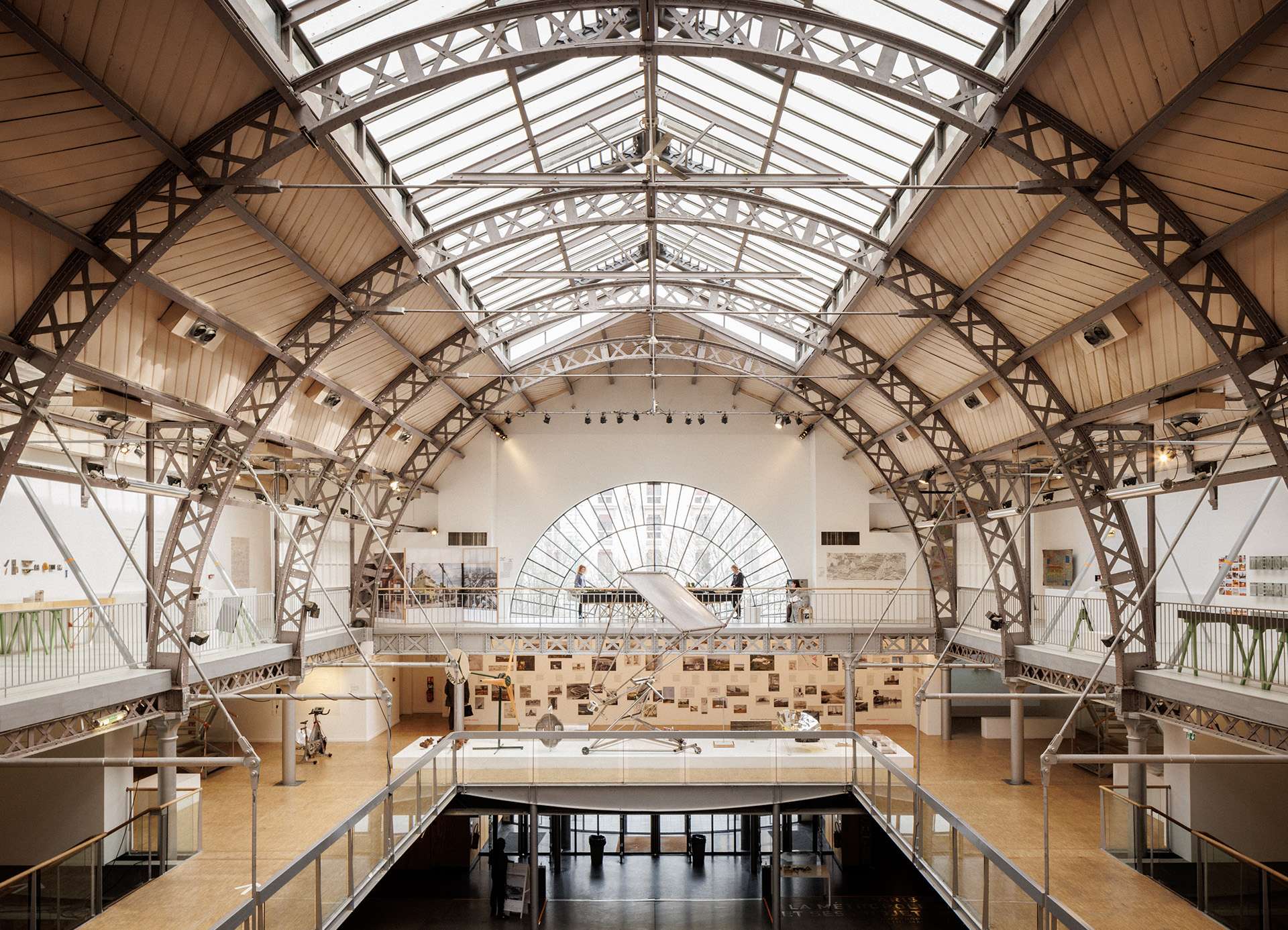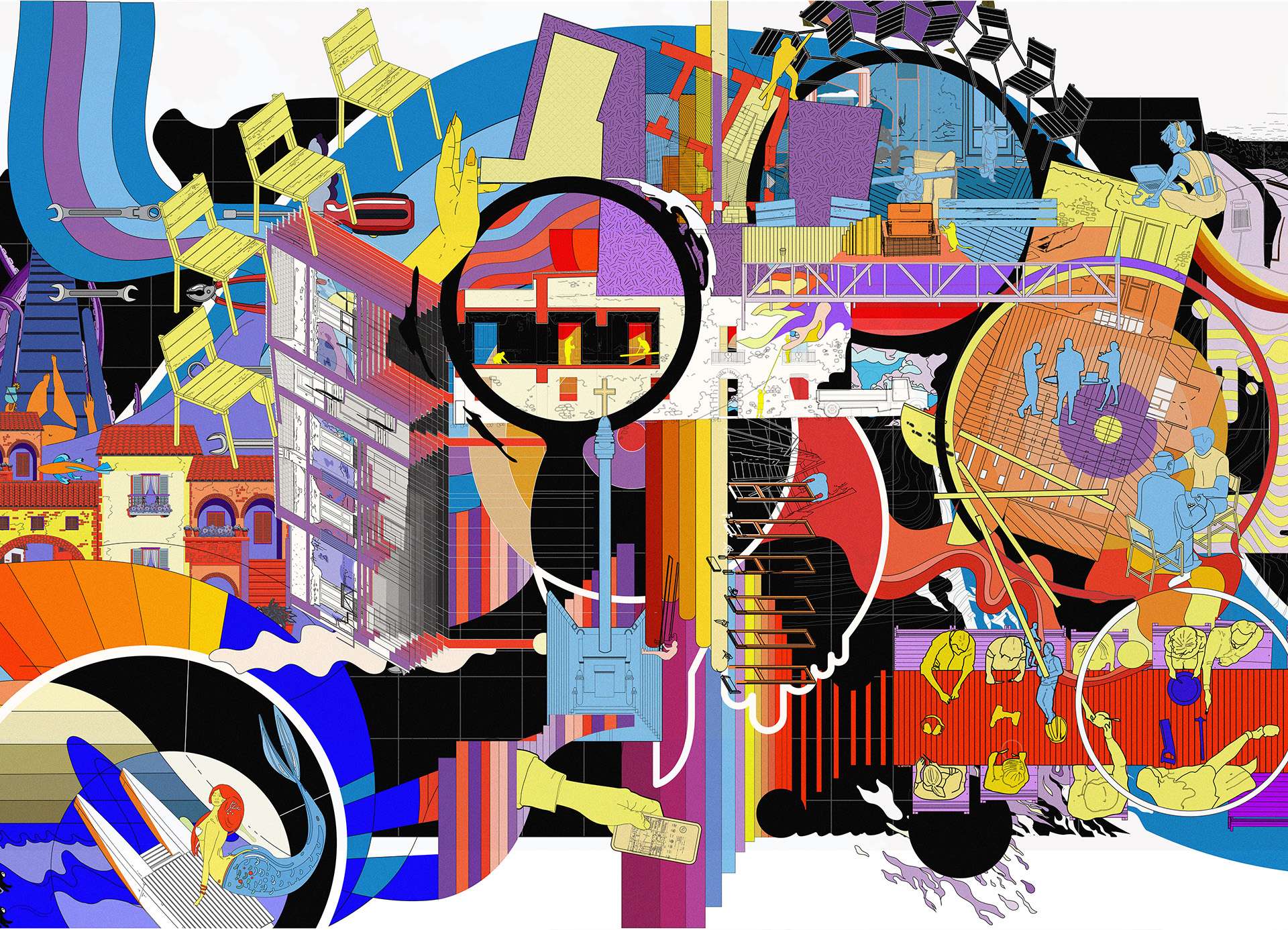The ligurian hamlet of Monesteroli is one of more than 6,000 abandoned hamlets and villages throughout Italy. Clinging halfway between sky and sea, the area traditionally relied on farming: its inhabitants moving seasonally, following the harvesting schedules, specifically. Monesteroli existed as the summer settlement and was cultivated as a vineyard. Only reachable by climbing a 1000 steps stair, abandoned, remote, ignored by mass tourism, hit by the harsh sun and roaring waves, Monesteroli is now crumbling into the sea bringing with it the local culture. In this conversation with Camilla Vespa and Sadegh Kaveh, students at the Politecnico of Milan, we discuss their approach which targets slow tourism and rural regeneration, to recover the village together with the land without losing their roots.
Our project contributed to bringing the attention of the authorities, of the inhabitants, of tourist, of potential investors towards this fascinating and fragile place, that shares its destiny with many other hamlets in Italy.
KOOZ What prompted the project and your interest in the Ligurian hamlet of Monesteroli?
CV | SK The site is very close to an extremely touristic area, equally beautiful yet neglected, hard to reach, fragile and misunderstood. Monesteroli is a particular heritage site from many different points of views. The hamlet is a small refuge for farmers made up of only 16 houses located on a very steep cliff next to the sea it is built upon an astonishing “hand-crafted” landscape that is not only the construction platform of the settlement but also strongly integrated with the natural texture of the area. The drystone walls, built and rebuilt continuously by the former inhabitants, shape its topography and hold it from eroding and being taken by the sea.It is as well in robust connection with the notion of cultural and economical rise of the settlement there.
The recent abandonment of the land (that cannot be cultivated with machineries due to its steepness), implied a fast decay of the coastal villages of Tramonti, especially Monesteroli, that is so close to the waves and so inaccessible. When we visited it, we understood something had to be done to help the village redevelop and to make its incredible heritage readable, before it disappears. Our project contributed to bringing the attention of the authorities, of the inhabitants, of tourist, of potential investors towards this fascinating and fragile place, that shares its destiny with many other hamlets in Italy.
KOOZ How does the project define and approach notions of remoteness and transhumance?
CV | SK It does it by targeting a possible use of the village other than mass tourism, that demands everything to be reachable, effortless, ordinary. The remoteness of the village is a feature that has been shaping its identity, we aimed to embrace it instead of reversing it.
Walking the long, monumental staircase leading to the village is a fundamental part of how Monesteroli is experienced and perceived, in its remoteness and isolation; the process of reaching it was and should still be a ritual. We worked on the landscape by designing 5 spots that support the modern transhumance and interpret the traces of the past one. Fountains, shaded rest stops, benches and landings side the path, and develop around traces that testify the ancient process of moving people and goods from one side to the other of the hill, and each station narrates the stories around these rituals without the pretention to write them down for good.
In our strategy the village hosts different kinds of activities and population according to the season and the farming activities. The idea of seasonality, and of the movement that it implies, is transposed to the buildings themselves, where a sort of transhumance takes places within the typical 2 stories stone houses: the ground floor is the core of summer activities, gravitating around the table and the community life, and the upper floor is the warm, intimate center of winter rituals.
As typical in remote places, interiors can mainly be realized by the inhabitants, they only include local, lightweight materials that can be easily transported and assembled.
Walking the long, monumental staircase leading to the village is a fundamental part of how Monesteroli is experienced and perceived, in its remoteness and isolation; the process of reaching it was and should still be a ritual.
KOOZ The project aims at redeveloping the area through a variety of scales which span from the landscape to the houses and the community. How does the project operate and tackle the three different scales?
CV | SK Considering all the scales is crucial to achieve a sustainable solution. A community is key to ensure future stability of an active life and constant care to the village. Therefore, we planned for a proposed scenario in which locals are involved in the process of regeneration as actors, working together with tourism on a more profitable form of farming and wine production. During summer, locals can involve tourists in traditional agricultural and building techniques, in the local heritage transmission and in wine production methods. During winter, when the grape is harvested and the land rests, the empty houses can be rented for medium and long periods to remote workers.
An adaptive architectural design solution for the houses can make the settlement adapt for contemporary life, now that the sole agriculture cannot be considered a mean of survival, without turning to a kind of tourism that would imply leaving the land behind and the eviction of the community, together with its heritage.
The landscape, on top of its economical role, also guarantees the stability of the earth and safety for the inhabitants. People used to live and farm, harvesting grape and producing wine over the same terraces that shape and stabilize the hillside. Without the land people could not have lived there. Without people, the land would crumble into the sea. Leaving the landscape out of the redevelopment strategy cannot be considered a viable way to recover the village.
We aim at giving the inhabitants a reason to come back and work on their houses, on their land and on their community; at the same time, as designers we can help bringing tourists in touch with a hidden and fascinating side of Italian heritage.
We planned for a proposed scenario in which locals are involved in the process of regeneration as actors, working together with tourism on a more profitable form of farming and wine production.
KOOZ Through slow tourism and rural regeneration in what ways and through what means does the proposal work in-between preservation and activation?
CV | SK We tried to create a strategy that combines activation and preservation, not only on a physical level. The fragility of the landscape is one of its qualities: it was defined by the constant work of humans that kept fixing, changing, redoing paths, walls and buildings for millennia, accepting and predicting the contrasting action of nature. This balance between men and nature dates back further than the memory can go; actions were done and redone, becoming rituals, acquiring mythological qualities, where legends and beliefs shaped lives of the inhabitants. It is a landscape of oral traditions, marked by the rhythms of a transhumant life, a heritage that is only in part visible and permanent, but for the most intangible and perpetual.
As designers we tried to make the landscape readable, to study and preserve the buildings and the land without altering their nature, rediscovering traditional techniques and materials. We tried to work on rituals as part of a memory that is getting lost, that was never written before, and that only the inhabitants can narrate.
By stimulating slow tourism, we aim for redeveloping a stable community and the feeling of belonging to the village. At the same time, it was clear that the village had to change in a sustainable way, to evolve for contemporary life in order to allow its activation, to provide visitors with an experience and to raise awareness and responsibility for the space they live in.
It is a landscape of oral traditions, marked by the rhythms of a transhumant life, a heritage that is only in part visible and permanent, but for the most intangible and perpetual.
KOOZ The condition of Monesteroli is one which is extremely common throughout the Italian territory. Projects as “La Rivoluzione delle Seppie” reveal that a bottom-up collective approach can work in breathing new air into these abandoned sites. Beyond the specific – what could be the potential of devising an infrastructure of resilience amongst these individual hamlets / sites?
CV | SK Each hamlet is surely a singular case, therefore, the strategy should aim at enhancing the specific qualities of each hamlet. What worked well in some locations may fail in others. Nonetheless, some actions can be beneficial in several contexts.
We think that involving the community is key to a form of redevelopment that helps villages not to lose their roots. Its involvement implies a strategy almost opposed to the "albergo diffuso" (widespread hotel), where the aesthetic qualities of the site are valued over its intangible qualities. We think that designers and politicians should work together at developing an approach to travel that values discovering the true identity of a place, to get involved in its life, in its traditions, in its food and culture; promoting a slower, healthier, more aware form of tourism, together with educating the community about the potential of their heritage and acting against the depopulation of smaller settlements, these are all fundamental steps.
Tourism itself is leaning towards experiences, authenticity, sustainability; the time for a change may be approaching.
We think that involving the community is key to a form of redevelopment that helps villages not to lose their roots.
KOOZ As architects, what is for you the potential of working with the re-use, repair and regeneration of these sites for future generations?
CV | SK We started working on this project firmly motivated by the idea that there are several strategies to reverse the progressive abandonment of our built heritage, without overcomplications. It is obvious that we are dealing with a crisis that has roots to our approach to production and consumption. Ideally, a positive approach does not imply aggressive speculation, eviction of the remaining community and dramatic transformation of the nature of the sites. Space and culture as products are part of the process.
Context and history can be seen as part of the resources and materials towards forming new spaces. This may allow the incredible Italian heritage to survive, and possibly to grow. We tried to develop our proposal with this aim in mind. It is sure that the sooner we bring our attention to the topic, the more actors we involve in the process, the less gets lost. A design that ignores the past and the future no longer makes sense.
Bio
Camilla Vespa & Sadegh Kaveh are graduated students from polytechnic university of Milan where they cooperated in numerous competitions and developed several projects together including their master’s thesis “inhabiting the remoteness“. Since then, Camilla works in Basel, Switzerland, at Herzog & de Meuron, while Sadegh has continued his practice as a designer in Shiraz, Iran & Copenhagen, Denmark, where he is currently based.
Camilla's architectural research focuses on the vernacular element, on how civilizations produce shapes that reflect their ways of thinking and living, and how globalization will impact it's future. Sadegh's focus is designing for readaptation of office interiors to the contemporary ways of work-life and developing the role of the office buildings in the city.





